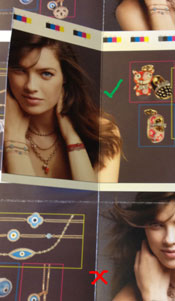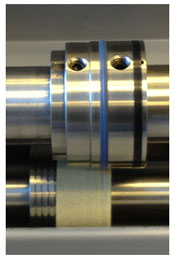The blessing and the curse for folding machine and bindery equipment operators is that there is always something new to learn. It’s great when you learn something new and you can do a job faster or better. But you can’t rest on your laurels because on this new plateau of performance there are even more things to learn, more questions and more is expected of you. There is a Chinese proverb that sums it up: “Learning is like rowing upstream. Not to advance is to drop back.”
It’s no surprise that we’re always learning new things since papers, printing processes and coatings are constantly evolving. We’re grateful that so many Technifold USA customers are willing to experiment with us to get the most from every piece of bindery equipment and every accessory. Here are a few tips and suggestions based on your feedback and on countless conversations about scoring and folding paper.
 The Masking Tape Trick. We'd wager that in 100 years there will still be masking tape, duct tape and rubber bands readily available in all binderies, whatever form the bindery of the future takes. And they will still be used frequently.
The Masking Tape Trick. We'd wager that in 100 years there will still be masking tape, duct tape and rubber bands readily available in all binderies, whatever form the bindery of the future takes. And they will still be used frequently.
The masking tape solution came in response to a problem with toner flaking off the inside of scored sheets. It’s not actually a fiber cracking issue, but rather an issue with toner not adhering to the sheet under the stresses of creasing. Typically it looks like a fine line along either side of the inside bead of the crease. The lower half of the photo at right (red X) shows a recent example.
Over the years several veteran bindery operators didn’t hesitate to try masking tape and sure enough, they shared with us that it works. Of course we had to try it for ourselves and we get positive results as well. (See the green check in photo at right.) The solution is to simply wrap a piece of masking tape once around the female component of the Tri-Creaser. (photo left)
 You will probably have to use a wider channel than the one you are currently using once the tape is on. For instance if you are using a blue rib in a blue 2-dot channel, use the blue rib in the yellow 1-dot or 2-dot channel. Or in the event that you are already at the widest channel (yellow rib in yellow 3-dot channel) first add the masking tape. Then back off the pressure. If that doesn’t work you can substitute a blue rib running in the same yellow 3-dot channel.
You will probably have to use a wider channel than the one you are currently using once the tape is on. For instance if you are using a blue rib in a blue 2-dot channel, use the blue rib in the yellow 1-dot or 2-dot channel. Or in the event that you are already at the widest channel (yellow rib in yellow 3-dot channel) first add the masking tape. Then back off the pressure. If that doesn’t work you can substitute a blue rib running in the same yellow 3-dot channel.
As vendors of a precision product it pains us to suggest adding masking tape. But, with our machine operator hats on, always focused on results, we didn’t think twice.
Check out the FAQ page here. We answer a lot of frequently asked questions about all three models of the Tri-Creaser. Also included are instruction and tip sheets for the various models. If you or one of your operators is new to the product, take some time to review them.
Use the Tri-Creaser to score brochures and signatures. Yes, the Tri-Creaser was originally designed to eliminate fiber cracking by creasing single sheets of paper. However, the various creasing ribs and multiple female channels give you quite a bit of flexibility in forming an ideal score for brochure and signature work. With the Tri-Creaser it’s very easy to change the depth and width of the score to perfectly suit the paper being folded. So feel free to experiment. A related article, Am I Scoring the Wrong Side of the Paper is also a good one to read regarding this type of work.
Use nylon ribs for paper that isn’t prone to cracking. We recently developed a nylon rib that fits the more popular EZ-Fit and Fast Fit Tri-Creasers. It’s much harder than our normal rubber rib and will last longer than the rubber rib. Although originally designed for creasing laminated papers, it’s also great for brochure and signature folding as mentioned above, where fiber cracking is not usually an issue. It’s also OK to use on cover stocks that don’t have a fiber cracking issue. (Email us if you have questions about nylon rib availability for your creasing tool.)

